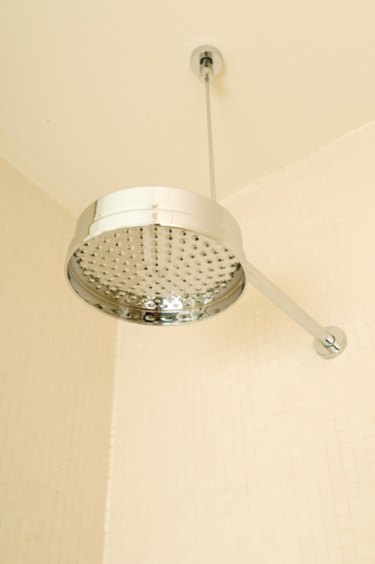
Popcorn ceilings common in homes starting in the 1960s are still found in homes today. In older homes, or those with poor construction, you may find your popcorn ceiling flaking and peeling away. The peeling of the texture may be caused by a variety of causes. Some may be a quick fix while in others the peeling may continue. Learn what is causing your ceiling to peel and what corrections can be made.
Humidity
Video of the Day
Humidity and the formation of mildew common in bathrooms and kitchens may begin to form underneath the texture layer of a popcorn ceiling. The popcorn ceiling will become damp and no longer adhere to the drywall underneath. Peeling often first appears in corners. You may first notice stains forming before the ceiling begins to peel.
Video of the Day
Water Leak
Often in two story homes, a water leak upstairs runs directly to the ceiling below it. Ceiling repair is often necessary due to the damage caused to the popcorn ceiling. Though the ceiling often is wet and has not begun to peel, once the leak is fixed and the ceiling dries, the texture will loosen from its base.
Drywall Dust
When a popcorn ceiling is applied directly to undusted drywall, it does not adhere to the drywall itself but simply to a thin layer of dust. Drywall compound is used to connect joints of two pieces of drywall, which are commonly sanded smooth. The leftover dust should be wiped away. However, this step can be forgotten. Often the popcorn ceiling will peel up in strips directly around the drywall joints. The entire ceiling may not be stable.
Correcting
In some instances, such as leaks and humidity, the popcorn ceiling can be patched and retextured. When humidity is a problem, paint the ceiling and walls of the area with a paint made especially for humid environments to decrease the risk of mildew occurring again. When drywall dust or major water leaks have occurred, you may need to scrape away the entire popcorn ceiling and retexture the entire area. You will notice any patched areas, and the entire texture will be stable.